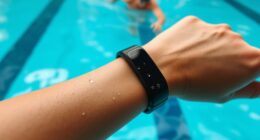To uncover the secrets of maintaining a clean tanning salon, it is crucial to prioritize consistent cleaning and maintenance. Utilize products specifically designed for tanning beds to keep them sanitary. Focus on frequently touched areas such as handles and control panels when cleaning. Ensure that your staff is well-versed in hygiene protocols and adheres to daily cleaning routines. Routine equipment inspections not only enhance safety but also improve customer experiences. Keep a detailed record of all maintenance tasks to aid in preventive care. By establishing a clean and inviting atmosphere, you are guaranteed to achieve client satisfaction. Consider implementing more effective practices to raise the hygiene standards of your salon even higher.
Key Takeaways
- Implement daily cleaning protocols for tanning beds, focusing on high-touch areas to maintain hygiene standards.
- Use designated cleaners specifically formulated for tanning equipment to ensure effective sanitation.
- Regularly check and replace cleaning supplies to uphold safety and effectiveness.
- Maintain detailed logs of maintenance tasks to track performance and identify trends.
Importance of Equipment Maintenance
Proper equipment maintenance is essential for guaranteeing your tanning salon runs smoothly and safely. By following the manufacturer's guidelines, you can maximize the performance and lifespan of your tanning beds and other equipment.
Regularly inspecting machines helps you identify issues before they escalate, preventing costly repairs and downtime. Familiarize yourself with each machine's unique maintenance needs, and schedule routine checks to guarantee everything operates correctly.
This proactive approach not only enhances client satisfaction but also boosts your salon's reputation. Keeping detailed logs of maintenance tasks helps you track performance and spot trends, allowing for timely interventions.
Ultimately, prioritizing equipment maintenance fosters a hygienic and efficient environment, guaranteeing a positive experience for both you and your clients.
Cleaning Protocols for Tanning Beds
Assuring that tanning beds are cleaned thoroughly after each use is key to maintaining a hygienic environment for your clients.
Start by using a designated cleaner specifically formulated for tanning beds. Focus on high-touch areas like handles, control panels, and the bed surface itself. Wipe these surfaces down after every session to eliminate any lingering germs.
Regularly check the cleaning supplies to guarantee they're effective and safe, avoiding alcohol or ammonia-based products. Implement a daily cleaning schedule that includes deep cleans weekly, and don't forget to clean air filters monthly.
Staff Training for Hygiene Standards

Thorough staff training on hygiene standards is essential for maintaining a clean and safe tanning salon environment.
You'll want to develop a detailed training program that covers the operation and maintenance of tanning equipment. Guarantee your team understands and follows manufacturer guidelines to prevent malfunctions. Regular updates on new technologies and procedures keep staff informed and engaged.
Establish daily cleaning protocols, emphasizing the importance of disinfecting surfaces after each use. Create a hygiene checklist to monitor tasks and responsibilities, guaranteeing high-touch areas receive extra attention.
Enhancing Client Experience
Creating a welcoming atmosphere in your tanning salon can greatly enhance the overall client experience. Start by ensuring your salon is clean and organized, making clients feel at ease.
Use soft lighting and soothing music to create a relaxing environment. Train your staff to greet clients warmly, answering questions and addressing concerns promptly.
Personalize each visit by remembering client preferences and offering tailored recommendations. Providing comfortable waiting areas with refreshments can make clients feel valued.
Keep communication open, encouraging feedback to improve services. Finally, consider loyalty programs or special promotions to reward repeat clients.
Proper Use of Tanning Products

To achieve the best results during your tanning sessions, it's important to understand how to properly use tanning products tailored to your skin type.
Start with a patch test to guarantee compatibility, as everyone's skin reacts differently.
Choose the right bronzer for your skin tone and apply it evenly to avoid streaks.
Always moisturize before applying products; hydrated skin absorbs bronzers better and provides a smoother finish.
Don't forget to read product instructions for ideal usage.
- Use a tanning mitt for streak-free application.
- Exfoliate your skin prior to tanning for even results.
- Reapply bronzer as needed to maintain your glow.
Record Keeping for Maintenance
Maintaining accurate records of all maintenance activities not only enhances the performance of your tanning beds but also guarantees a safe and efficient salon environment.
You should log every maintenance task, from filter replacements to repairs, ensuring you capture the date and specifics of each activity. This practice helps you identify patterns in maintenance needs, allowing you to schedule preventive actions before issues arise.
Regularly updated records serve as a reference for past maintenance, aiding in troubleshooting and ensuring peak equipment performance.
By keeping thorough logs, you'll enhance client satisfaction and safety, creating a reliable atmosphere that clients can trust.
Proper documentation is a key component of a successful and hygienic tanning salon operation.
Client Safety During Tanning

Ensuring client safety during tanning sessions involves applying sunscreen, using protective goggles, and limiting exposure to prevent harmful UV damage. By following these guidelines, you can enjoy a safe tanning experience while minimizing risks.
Always apply a broad-spectrum sunscreen with at least SPF 30 before tanning.
Wear protective goggles to shield your eyes from harmful UV rays.
Limit your tanning sessions to avoid overexposure; 15 to 20 minutes is generally safe.
Consider using self-tanning products as a UV-free alternative for a sun-kissed glow.
Creating a Welcoming Environment
A warm and inviting atmosphere in your tanning salon not only enhances the client experience but also promotes relaxation and confidence during their tanning sessions.
Start by ensuring your space is clean, well-organized, and beautifully decorated. Incorporate soft lighting and soothing colors to create a calming vibe. Use pleasant scents, like essential oils or air fresheners, to engage the senses.
Friendly, knowledgeable staff are essential; they should greet clients warmly and offer personalized service. Consider providing comfortable seating and complimentary refreshments to keep clients feeling pampered.
Frequently Asked Questions
How Often Should I Replace Tanning Bed Bulbs?
You should replace tanning bed bulbs every 500 to 800 hours of use, depending on the manufacturer's recommendations. Regularly check their performance, and don't wait until they're noticeably dim to guarantee ideal tanning results.
What Should Clients Do if They Experience a Skin Reaction?
If you experience a skin reaction, don't panic! Rinse the area with cool water, apply a soothing lotion, and consult a professional if it worsens. Your skin deserves royal treatment, so give it the care it needs!
Are There Specific Products to Avoid for Cleaning Tanning Equipment?
When cleaning tanning equipment, avoid harsh chemicals like bleach or ammonia. They can damage surfaces and affect clients' skin. Instead, use gentle, alcohol-free cleaners specifically designed for tanning equipment to guarantee safety and longevity.
How Can I Ensure My Salon Meets Local Health Regulations?
How can you assure your salon's safety? Regularly check local health regulations, maintain cleanliness, train staff, and document all procedures. Staying proactive assures you not only meet standards but also create a welcoming environment for clients.
What Are Common Signs of Equipment Malfunction to Watch For?
Watch for unusual noises, inconsistent tanning results, flickering lights, or error messages on your equipment. If beds feel excessively hot or emit strange odors, it's time to address potential malfunctions before they worsen.
How Can Tanning Salon Hygiene Practices Impact Airbrush Tan Longevity?
Maintaining proper hygiene practices at the tanning salon is crucial for ensuring the secrets of airbrush tan longevity. Clean equipment and sanitized surfaces can prevent bacteria and oil buildup, which can affect the lifespan of your airbrush tan. By prioritizing hygiene, you can help your tan last longer and look flawless.
Conclusion
To sum up, prioritizing hygiene in tanning salons is as essential as sunscreen on a sunny day.
By ensuring equipment is well-maintained, staff are trained, and cleaning protocols are followed, you not only protect your health but also enhance your tanning experience.
Remember, a clean salon feels like a refreshing change, making your journey to that sun-kissed glow enjoyable and safe.
So, stay informed and choose wisely for a radiant and worry-free tanning adventure!










